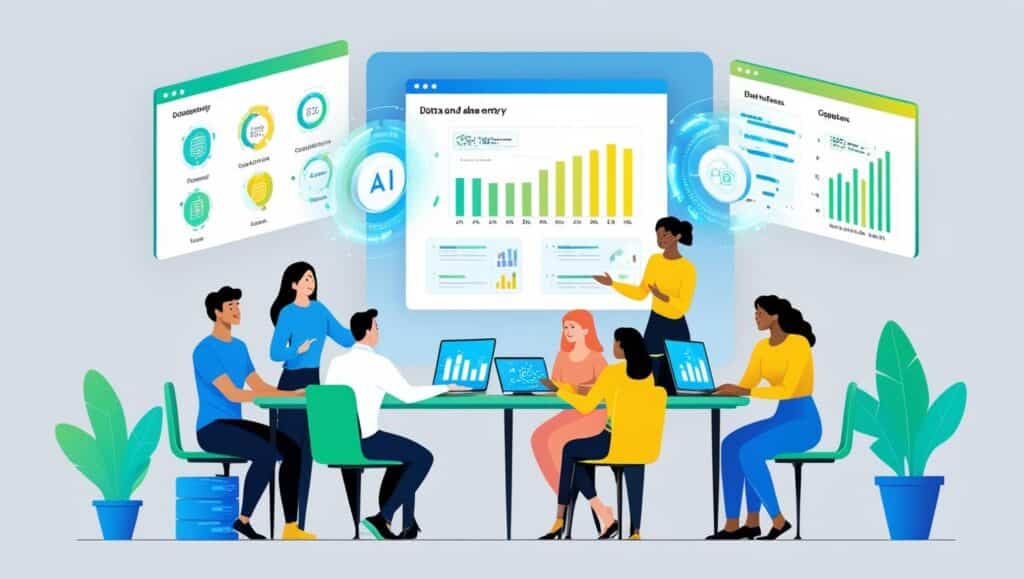In a world driven by data, the ability to organize and label information effectively is critical. Data annotation plays a pivotal role in creating structured, accessible datasets that empower businesses and organizations to operate with greater accuracy and efficiency.
This article explores the fundamentals of data annotation, its applications across industries, and the tools that make it possible. Whether you’re managing large datasets or seeking to optimize your business processes, understanding data annotation is essential to achieving precision and clarity.
What is Data Annotation?
Data annotation refers to the process of labeling and categorizing information to make it more accessible and usable. This critical process transforms raw data into structured formats that support decision-making and enhance operational efficiency. Whether applied to text, images, videos, or audio, data annotation ensures that datasets are organized and meaningful.
Key aspects of data annotation include:
- Purpose: Turning raw information into actionable insights that drive better decisions and strategy development.
- Versatility: Supporting diverse industries such as healthcare, retail, logistics, education, and beyond with tailored annotation techniques.
- Organization: Establishing clarity and order in complex datasets, making them easier to analyze and utilize effectively.
By serving as the backbone of effective data management, data annotation empowers organizations to harness the full potential of their information resources, fostering innovation and improving outcomes across various sectors.
Types of Data Annotation Services
Data annotation encompasses a variety of techniques tailored to different types of information, each designed to address specific organizational needs and challenges:
- Text Annotation: Labeling textual data for keyword tagging, sentiment analysis, or content categorization. This technique is essential for understanding and leveraging textual insights in industries like customer support and marketing.
- Image Annotation: Organizing visual data by labeling objects, regions, or attributes in images. It supports applications such as quality control in manufacturing and visual search in e-commerce.
- Video Annotation: Annotating video content to track activities, objects, or interactions over time. This is vital for training systems in areas like security surveillance and sports analytics.
- Audio Annotation: Transcribing and tagging audio data for use in customer service, transcription services, or audio analysis. Industries such as entertainment and telecommunications benefit significantly from precise audio labeling.
- Geospatial Annotation: Tagging geographic data for urban planning, logistics, or navigation. This technique is critical for optimizing routes, managing infrastructure projects, and enhancing location-based services.
These services streamline data organization, improve usability, and enable businesses to unlock actionable insights across diverse applications. By tailoring annotation strategies to their unique requirements, organizations can ensure data-driven success in an increasingly competitive landscape.
How Data Annotation Enhances Business Operations
The ability to organize and utilize data effectively is a transformative advantage for businesses. By structuring raw data into actionable formats, data annotation drives operational success in multiple dimensions:
- Improved Decision-Making: Well-organized and annotated data provides actionable insights, enabling businesses to make informed and strategic decisions that align with their objectives.
- Enhanced Efficiency: Structured datasets eliminate the inefficiencies of manual searches, streamlining workflows and freeing up time for high-value activities.
- Scalability: Annotated data is highly adaptable, allowing businesses to extend their applications seamlessly across different departments, projects, and industry use cases.
- Customer Insights: Tagged data offers a comprehensive view of customer behaviors and preferences, empowering businesses to deliver personalized and impactful customer experiences.
By prioritizing data annotation, businesses not only enhance operational accuracy but also create a foundation for innovation and sustainable growth. Investing in these practices enables organizations to unlock the true potential of their data resources.
Best Practices for Data Annotation
To make your data annotation projects successful, it’s important to follow proven practices that enhance efficiency and ensure quality. Here are some practical tips to guide your efforts:
- Set Clear Goals: Start by defining the objectives of your annotation project. Knowing what you aim to achieve helps you align efforts with your business needs and keeps the project focused.
- Use Reliable Tools: Equip your team with platforms and software designed for accurate and efficient annotation. Tools with features like AI assistance or real-time feedback can simplify complex tasks.
- Ensure Data Quality: Regularly review annotations to maintain consistency and correctness. Quality control measures like double-checking work or using validation tools are essential for reliable outcomes.
- Train Annotators: Clear instructions and training sessions ensure that your team understands the project’s goals and methodologies. Well-trained annotators produce more accurate and meaningful results.
- Iterate and Improve: Treat annotation as an evolving process. Continuously refine methods based on feedback, new insights, or changing project requirements.
Following these practices not only maximizes the value of your annotated datasets but also ensures that your projects run smoothly and deliver meaningful insights for your organization.
Tools and Technologies for Data Annotation
Efficient and accurate data annotation is supported by a variety of tools, each designed to simplify the process and enhance outcomes. These technologies empower businesses to handle complex datasets with ease, ensuring consistency and precision:
- Labelbox: Known for its user-friendly interface, Labelbox simplifies text, image, and video annotation tasks, making it an excellent choice for projects requiring intuitive workflows.
- Amazon SageMaker Ground Truth: A robust and scalable solution, this tool is ideal for managing extensive annotation projects, offering features like automated labeling to accelerate the process.
- SuperAnnotate: Perfect for collaborative efforts, SuperAnnotate combines annotation capabilities with integrated quality control, ensuring accuracy and team coordination.
- CVAT (Computer Vision Annotation Tool): An open-source favorite, CVAT provides advanced functionalities for labeling visual data, making it a go-to option for video and image-heavy projects.
By utilizing these tools, organizations can not only streamline their annotation processes but also ensure the quality and reliability of their datasets, paving the way for more effective decision-making and operational success.
Bridging Precision and Success Organizing
As organizations continue to navigate the complexities of data management, the role of data annotation becomes increasingly significant. It bridges the gap between raw information and actionable insights, ensuring that every piece of data serves a purpose. With the right tools, techniques, and practices, data annotation transforms chaotic datasets into structured assets that fuel growth, innovation, and efficiency. This transformation doesn’t just optimize internal workflows; it empowers teams to make smarter decisions and uncover new opportunities for success.
By investing in this process, businesses position themselves to excel in a data-driven world, building a foundation of precision and clarity that drives both short-term gains and long-term growth.
Data for Impact
Data annotation plays a crucial role in transforming disorganized datasets into powerful tools for driving success across a variety of industries. With the right strategies and tools, businesses can turn raw data into structured, actionable insights that enhance decision-making, boost efficiency, and support long-term growth. At Deducto, we take pride in delivering high-quality data annotation services that are tailored to your unique needs, ensuring every project is executed with precision and clarity.
Ready to unlock the potential of your data? Contact Deducto today and let us guide you in transforming information into powerful insights that fuel your business success.





